North Vietnam, 45. Anniversary of the October Revolution, Michel Nr. I; The October Revolution in Russia occurred between October 25th and 7th of November, 1917 by a forced coup de etat of the Communist Bolschewiki (Wikipedia). North Vietnam had the idea of issuing a single stamp in a 12 xu nominal. Designs were solicited by well known stamp designers, phase prints were produced for the various print runs and in the end at least a few complete imperforate sheet (25) of the stamp was produced. However, the stamp was never issued. The reason for that is unknown. It is only known imperforate. As a result this stamp is one of the rarest stamps of all of Vietnam.
Here is a mint original stamp printed on white paper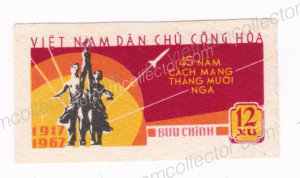
There are only two larger units known of this iconic stamp. Below is a mint block of four (ex Lucian Lu) from the right sheet margin that represents the largest known unit to exist. Red Lucian Lu expertising hand stamp on the reverse.
Given the scarcity of the original stamp a pretty good forgery has been produced. The original stamp was produced in the off-set printing method while the forgery was produced in the letter printing method. Apparently the forgeries were produced by the sheet as this single forged stamp on slightly tanned paper from the upper selvage shows.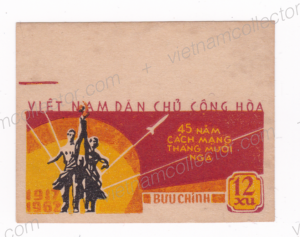
There are numerous differences between original and forgery apart from the printing method. For example the letters and accents in the top line are finer in the originals than in the forgeries:
Forged Stamp (note especially the different shaped “E” in “Viet” and the accent on “Dan” )
The sculpture that is depicted on the stamp is again much more subtle and much better defined on the original stamp as compared to the forgery.
Original Stamp
Forged Stamp (note the poor design of the faces and the two black dots on the chest of the male figure)
Also the background colors on the original stamp are much better defined The lowest circle depicting the sun is much yellower on the original and more orangey on the forgeries. Also the years “1917” and “1962” are nicely defined on the original (with the numbers being orange) while on the forgery the numbers are harder to see and almost get absorbed by the similar colored background.
Below is a work page from the stamp’s designer that shows every phase of the seven stage printing process along with some manual printing notes. The page itself is the back of a repurposed Government service award. This is a unique item that is exceedingly rare.
Yellow Print Phase
Black Print Phase
Light Red Print Phase
Dark Red Print Phase
Light Red and Yellow Print Phase
Light Red, Yellow and Black Print Phase
Finished Stamp
Given that the stamp was never issued there are no genuine used samples or any postal history.
Registration Nr. 100780

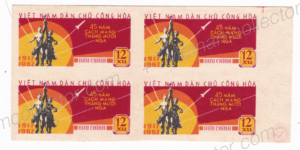
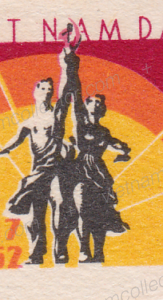
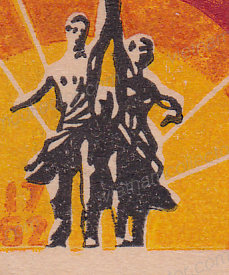
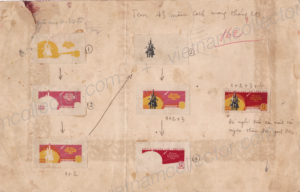
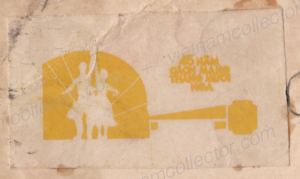
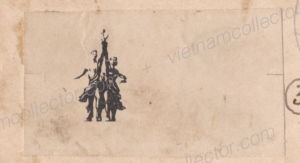
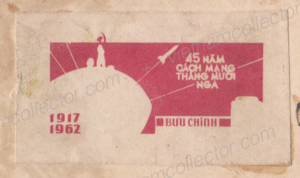
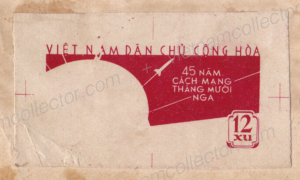
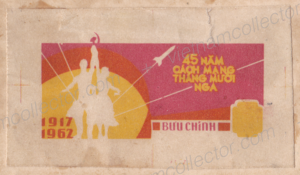
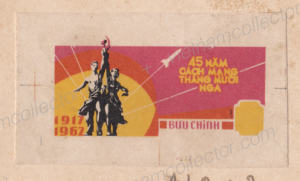
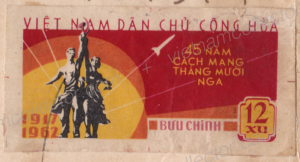
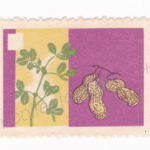
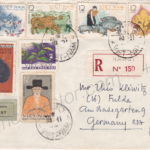
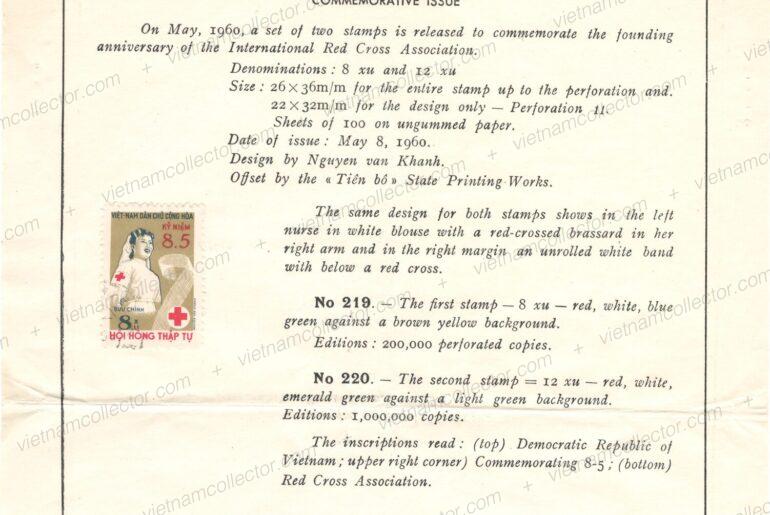
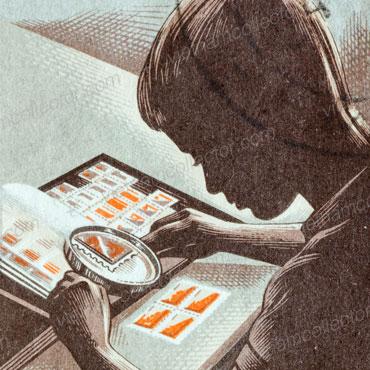
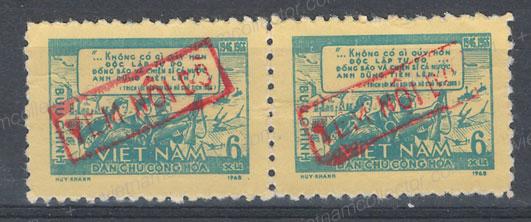
Comments are closed.